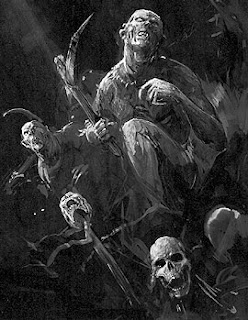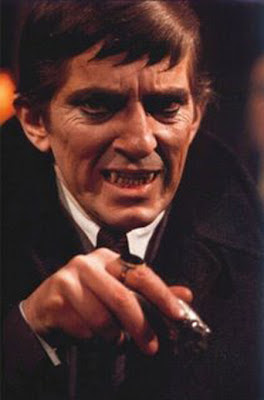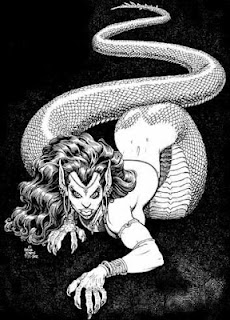Thursday, May 31, 2012
Get Your Hot Mega Promotion Handout Here!
Wednesday, May 30, 2012
Haunted Richmond II Releases August 2012
I am excited! My nonfiction ghost book, Haunted Richmond II, is now up for preorder on Schiffer Publishing's website. It will be released August 2012. ISBN: 9780764339646. http://is.gd/omrbyD
Book Blurb:
Return once more to haunted Richmond, where no building is safe from supernatural happenings. Visit Stories Comics, which holds more than just comics within its walls. Step back in time at Henricus Historical Park where you'll be welcomed by dead colonists, Civil War soldiers, and other haunts. Discover that not only is the Richmond Vampire out for your blood, but the Werewolf of Henrico waits for you beneath the full moon. It seems that the War Between the States is still being fought between ghostly Confederate and Union soldiers at Cold Harbor, Sailor's Creek, Parker's Battery, and Petersburg Battlefield. All this… plus a sea serpent, a lost city, ghostly cats, Bigfoot, a UFO, and haunted churches, parks, and colleges. So be sure to plan your visit now to a very paranormal Richmond. The dead don't stay dead in this town!
Monday, May 28, 2012
Thanks to All Vets-Memorial Day
Warrior Not Forgotten
Rest, dear Veteran,
You fought so hard.
Struggling through jungle,
desert sands, and mountainous range
Rode in ships floating on choppy seas,
Danger from uboats below or enemy planes above.
Enemy faces peeping from green folige,
Massive tanks rolling over dunes of sand:
You're someone's father, mother,
brother, sister or friend;
Somebody known somewhere,
And yet, a lonely cross marks your grave,
A flag fluttering in the wind its only companion,
It's all we know of one soldier, sailor or airman.
One tear shed, one heart broken,
But one life not given in vain.
This is an original peom by Pamela K. Kinney. Copyrighted, do not copy to share the poem on your website or forum, but share the link instead, so others come here and may know of the valiant heroes among our midst.
Friday, May 25, 2012
Supernatural Friday: Vampires: Part 3
Dracula, along with all
those modern vampire books and movies (and even the flesh eating zombies since
Romero’s Night of the Living Dead, too) are inspired by the folklore of eastern
Europe. History records dozens of mythical vampire figures in this region,
going back hundreds of years. They have their particular habits and
characteristics, but most fall into one of two general categories: Demon that become reanimated corpses so they could walk among the living and
spirits
of dead people that
would not leave their own body.
The most notable of the demon
vampires would be the Russian upir and the Greek vrykolakas.
Sinners, babies not baptized, and those outside the Christian faith were more
likely to be reanimated after death. Those who practiced witchcraft are also included,
as they would be particularly susceptible because they had already given their
soul to the devil in life. Once the undead corpses rose from the grave, they
would terrorize the community and feed on the living. Not just blood, but the
flesh, too.
Most of these legends
account that these undead corpses must return to their grave regularly to rest
(notice that it never said day or night—though night would seemed the most fearsome time for evil
to walk). When townspeople believed that someone had become a vampire, they exhumed
the corpse to get rid of the evil spirit. They might try an exorcism ritual,
but more often they would destroy the body so it would no longer have a form to
use. Various methods include cremation, decapitation, even driving a wooden
stake through the heart. Bodies might also be buried face down, so the undead
corpses would dig deeper into the earth, rather than up into shallower ground. Other
families might also secured stakes above the corpse so it would impale itself
if it tried to escape.
Vampires in Moldavia , Wallachia and Transylvania (part of Romania
The strigoi need to return
to the grave on a regular basis, just like the upir did. If townspeople
suspected someone had become a strigoi, they would do the same as those did to
the upir, exhume the body and burn it, or run spikes through it. But after
seven years, if a strigoi still hung around, it could live wherever it pleased.
It was said that strigoi traveled to distant towns and would begin new lives as
ordinary people. These secret vampires even met with each other in weekly
gatherings.
In addition to undead
strigoi, referred to as strigoi mort, people also feared living
vampires, or strigoi viu. Strigoi viu were cursed
living people who were doomed to become strigoi mort when they died. Babies
born with abnormalities, such as a tail-like protrusion or a bit of fetal
membrane tissue attached to the head (cauls), were usually
considered strigoi viu. Also, if any strigoi mort living among humans had children,
the offspring were cursed to become undead strigoi in the afterlife. When a
known strigoi viu died, the family destroyed its body to keep it from rising from
the grave.
In other parts of eastern
Europe, strigoi-type creatures were called vampir, or vampyr,
most likely a variation on the Russian upir. Western European countries
eventually picked up on this name, how the term became “vampyr” and later “vampire"
in the English language.
During the 17th and 18th
centuries, vampire hysteria spread through eastern Europe. People reported that
they saw their dead relatives walking around, attacking the living. Authorities
dug up scores of graves, burning and staking the corpses (like those accused of
being witches and even werewolves earlier in history were burned at the stake).
In eastern European folklore, it was said that a vampire could be warded off by
scattering seeds on the ground, either on top of the vampire's grave or outside
your house. Vampires, said to be obsessive creatures, were compelled to count all the seeds. If you hid a nail in the
seeds, it pricked the vampire midway through the count. The vampire would then
drop the seeds and have to start all over again.
The vampire scare spread to
western Europe. This led to academic speculations on the creatures, as well as
vampire poems and paintings. It was these works that inspired an Irishman named
Bram Stoker to write his own vampire novel,
"Dracula."
Abraham (Bram) Stoker, a theater manager and part-time novelist, was not the first author to feature the vampire in a literary work, but his version is the one that really caught on. This is largely due to the novel's unforgettable villain, Count Dracula, as well as the foreboding setting. Stoker arrived at both elements through extensive research. He set much of the action in the mysterious mountains of the Transylvania
Selectively sampling from several versions of the vampire myth and adding some details of his own, Stoker formed the standard for the modern vampire. Unlike the vampires in the eastern European tradition, Stoker's monster loses power in the sunlight, is repelled by crucifixes and has acute intelligence. Interestingly, Stoker's vampires do not have reflections, while many earlier vampire creatures were fascinated by their own reflection.
Stoker's research also turned up a name for his villain, based on a real Dracula. Vlad Tepes’ father was known as Vlad Basarab (inducted into the Royal Order of the Dragon, a branch of the Brotherhood of the Wolf). From then on, until his death, Vlad Basarab referred to himself as Vlad Dracul. Dracul is a Romanian word for “dragon,” but also means “devil.” The suffix “a” means “son of,” so when Vlad Dracul’s second son, also named Vlad, was born later that year in Sghisoara, he became Vlad Dracula, Son of the Dragon. More often he was called "Vlad Tepes," meaning "Vlad the Impaler." This was in reference to his predilection for impaling his enemies on long wooden stakes. This form of torture and punishment actually came about due to both him and his brother, Radu, captured as prisoners of the Turks, and were allowed to watch the Turks do this to their enemies.
The real Dracula had a reputation for unfathomable brutality (a reputation many Romanians claim is inaccurate, but then again, they believe him to be a hero, due to defeating the Turks), but there is not much evidence showing that people believed he was a vampire. Stoker's fictional villain is not closely modeled after the real Dracula, though they are sometimes linked in movies based on the book. Stoker borrowed the name, as well as his social standing, for his vampire. Unlike the wandering, homeless strigoi, Dracula was written as a wealthy count, hiding out in a grandiose castle.
In the 1927 play "Dracula," and the film adaptation that followed in 1931, Bela Lugosi embraced this aristocratic notion. Dracula's familiar outfit – black formal wear and a billowing black cape, also was introduced. In the novel "Dracula," the count is described as a withered, ugly old man, more like Max Shreck's portrayal in the 1922 silent film adaptation, "Nosferatu," than Lugosi's presentation. But the suave Dracula caught on, showing up in scores of vampire movies, television shows and cartoons, even to this day, besides the creepier “nosferatu” version (like in 30 Days of Night, Salem’s Lot, and I Am Legend)
The vampire continues to evolve over the years, as novelists and filmmakers reinterpret and expand the mythology. In Anne Rice's popular novels, she takes vampires to the next level, giving them a conscience and a range of emotions. In her work, vampires are not necessarily evil -- they are presented as real, rounded people. On the television show "Buffy the Vampire Slayer," creator Joss Whedon has pursued similar ideas, exploring the idea of a vampire with a soul and if you remember, his soulless vamps were called demons, not unlike the Russian upir and the Greek vrykolakas.
Wednesday, May 23, 2012
Sunday, May 20, 2012
Signing at SciFi Yard Sale in Virginia Beach, Va. May 26th
I'll be selling and signing my books at the Science Fiction Yard Sale this Saturday, May 26, 2012 9:00 a.m. to 2:00 p.m. The address is 4844 Linshaw Lane, Virginia Beach, Virginia. Others will be there selling collectibles, books, DVDs, etc.. The event is free.
For directions:
Friday, May 18, 2012
Supernatural Friday: Vampires: Part 2
It is interesting that
author Sherrilyn Kenyon has written paranormal romances concerning being called
Dark Hunters (sort of vampires, but good guys), all going back to the Greek goddess, Artemis. The ancient Greeks
had feared vampiric like the Lamia Lamia Lamia Lamia
The Greeks believed in and feared
the empusai, the malicious daughters of Hecate, the goddess of witchcraft. The empusai
could change form and they rose from Hades (the underworld) at night as
beautiful women. They seduced shepherds in the field, devour ing them
afterwards. A similar creature, the baobhan sith, appears in
Celtic folklore.
There have been creatures
like vampires in the mythology of Asia . Indian
folklore describes a number of nightmarish characters, including rakshasa,
gargoyle-like shape-shifters who preyed on children, and vetala,
demons who would take possession of recently dead bodies to wreak havoc on the
living. In Chinese folklore, corpses could rise from the grave and walk again. A
k'uei was created when a person's p'o (lower
spirit) did not pass onto the afterlife at death, usually because of bad deeds
during life. The p'o, angered by its horrible fate, would reanimate the body
and attack the living at night. One particularly vicious sort of k'uei,
known as the Kuang-shi (or Chiang-shi), had the ability of flight and take on
different forms also. Covered in white fur, these fiends had glowing red eyes
and bit into its prey with sharp fangs.
Nomadic tribes and traveling
traders spread different vampire legends throughout Asia, Europe and the Middle East . As these stories traveled, their various
elements combined to form new vampire myths. In the past 1,000 years, vampire
legends have been especially pervasive of eastern European contributions.
Next Friday, I will post
about the folklore of the European vampires—who insoired the novel, Dracula and
many modern vampire novels, and what most people think of as vampires.
Thursday, May 17, 2012
Review of The Stargazers
I got the chance to read this fantasy, that starts in an alternate world (not unlike the Witch World series by Andre Norton) and ends up in present day town on Earth. The heroine is a child born into a magic-wielding family of witches who is told she is part of a prophesy where she must go to Earth, let a human man make love to her and get her with child, then come back to sacrifice the child to bring magic back to her world. Something she increasingly does not want to do as she becomes more and more into our world. Though the author says it started as YA until some of its subjects wouldn't suit a Young Adult novel, so instead more an adult fantasy (though to tell her, I have read many modern Young Adults with adult themes and cussing and so forth, I never read in mine as a teenager).
Due to some problems with the storyline I only give it 3 1/2
Tuesday, May 15, 2012
Friday, May 11, 2012
Supernatural Friday: Vampires: Part I
“Her house sinks down to death,
And her course leads to the shades.
All who go to her cannot return
And find again the paths of life.”
And her course leads to the shades.
All who go to her cannot return
And find again the paths of life.”
For the next few
weeks, due to the movie Dark Shadows and Barnabas Collins, the first romantic
vampire, who led the change from frightening to the seductive ones full of pain
about being a vampires (mmm. . . think Angel, Anne Rice’s vamps, etc…) and with
the upcoming Abraham Lincoln, Vampire Hunter film, I will be blogging about
vampires.
Vampire-like creatures date back thousands of
years, and pop up in dozens of different cultures. Human kind has always been fascinated with
them, or more likely in fear of, at
least until modern times, such as why we have vampires in contemporary books,
movies and television shows. According to the predominant mythology, every
vampire was once a human, who, after being bitten by a vampire, died and rose
from the grave as a monster. Vampires crave the blood of the living, whom they
hunt during the night. They use their protruding fangs to puncture their
victims' necks. At least the European ones anyway.
Since they're reanimated
corpses—the living remains of a deceased person—vampires are often referred to
as "the undead." This means they are deceased and yet, not. Vampires
are potentially immortal, but they do have a few weaknesses. They can be destroyed by a stake
through the heart, fire, beheading and direct sunlight, and they are wary of
crucifixes, holy water and garlic. Vampires don't cast a reflection, and they
have superhuman strength.
This vampire figure, with
its particular combination of characteristics and governing rules, is actually
a fairly recent invention. Bram Stoker conceived it in his 1897 novel, Dracula. The vampire changing into a bat came from this novel also, thanks to the real vampire bats in South America. Other authors reinterpreted
Dracula in a number of plays, movies and books.
The legends of vampires date back at least 4,000
years, to the ancient Assyrians and Babylonians of Mesopotamia .
Mesopotamians feared Lamastu (also spelled Lamashtu), a vicious demon goddess who preyed on humans. In
Assyrian legend, Lamastu, the daughter of sky god Anu, would creep into a house
at night and steal or kill babies, either in their cribs or in the womb.
Believers attributed sudden infant death syndrome and miscarriage to this
figure. Lamastu, which translates to "she who erases," would also
prey on adults, sucking blood from young men and bringing disease, sterility
and nightmares. She is often depicted with wings and birdlike talons, and
sometimes with the head of a lion. To protect themselves from Lamastu, pregnant
women would wear amulets depicting Pazuzu, another evil god who once defeated the demoness.
Lamastu is closely associated with Lilith, a prominent figure in some Jewish texts.
Accounts of Lilith vary considerably, but in the most notable versions of the
story, she was the original woman. God created both Adam and Lilith from the
Earth, but there was soon trouble between them. Lilith refused to take a
subservient position to Adam, since she came from the same place he did. Lilith however came to Adam as he lay asleep and coupled with him in his
dreams. By this means, she became mother of all the uncanny beings who share
this planet invisibly with mortals, and are known as the fairy races or the djinn.
In one
ancient version of the legend, Lilith left Eden London
Stop by next week, as I talk about another type of vampire or two.
Thursday, May 10, 2012
Spring Arts and Authors Fair at Chester Library in Chester, Virginia May 12th
Wednesday, May 09, 2012
Tuesday, May 01, 2012
WEIRD WEDNESDAY
I guess these guys wanted either to pretend they were riding racehorses, or their bikes had the power of one horse.
Subscribe to:
Posts (Atom)
























